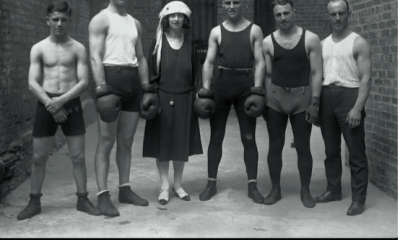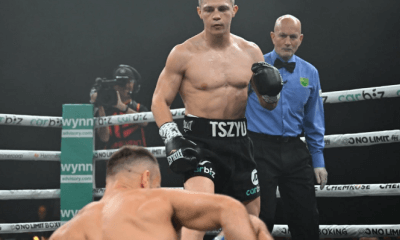Featured Articles
Venerated Sportswriter William Nack Had a Soft Spot for the Sweet Science
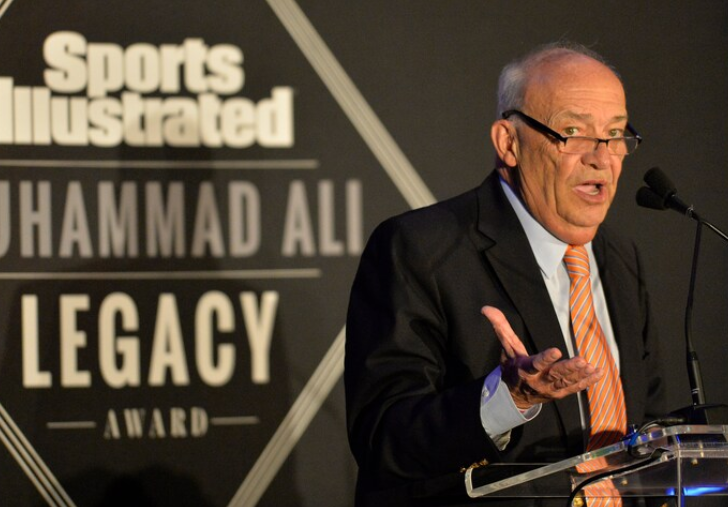
William Nack came late to sportswriting, but once he did, it was gangbusters.
Nack, who would have celebrated his 81st birthday on February 4, spent 11 years at New York Newsday and 23 years at Sports Illustrated, and at each stop left an indelible mark.
At the Long Island-based daily, Nack, a native of Chicago, a graduate of the University of Illinois, and a Vietnam veteran, covered the environment and politics in addition to sports where his main focus was on horse racing and boxing.
Honored by the Boxing Writers Association of America with the 2004 A.J. Leibling Award and the 2017 recipient of the ESPN Award for Literary Sportswriting, Nack found time to pen three books, including “Secretariat: The Making Of A Champion,” and his memoir, “My Turf: Horses, Boxers, Blood Money, And The Sporting Life.”
Richard O’Brien worked with Nack at Sports Illustrated. “I was a boxing reporter, writer, and the beat editor at S.I. for more than 25 years. As foreground, I was – and remain – a huge fan of Bill’s writing, and of Bill the man. Sentence for sentence, he was as good as anyone ever at the magazine, and he brought such a keen eye and such a huge heart to every story,” he said. “This was a man who could – and often did in the closing hours of an S.I. Christmas party – quote the final pages of ‘The Great Gatsby,’ word for word, in both English and Spanish. His command of language was just as lyrical.”
“Bill had an enormous passion for his writing, for diving into his subjects, gathering every possible detail and nuance, and working and reworking his stories until he felt he had everything just right,” he said. “I attended the first [Pernell] Whitaker-[Julio Cesar] Chavez fight with him at the [San Antonio] Alamodome in 1993. I was just a reporter then, running quotes for him, but he called me later that night – or, I should say, in the early morning hours long after the fight – to read me his lede. It was beautiful, perfect, but Bill was sweating it, working it, turning it over, worrying about it, as I think he did every story. I remember being thrilled, and honored, listening to him read it.”
“Bill wasn’t the kind of boxing writer you find hanging out in the gym all the time, or scrounging the press room buffet while gossiping with the rest of the media in the week before a big fight,” O’Brien offered. “He wasn’t covering four-rounders in Atlantic City or arguing over the latest junior middleweight rankings. His heart and his eye were drawn to the largest moments and greatest figures, yet he was able – again, in his passion and his commitment to research, reporting and interviewing – to get deeper with those subjects than anyone else.”
O’Brien referenced some of Nack’s boxing features to explain what made his work sparkle.
“His profiles of Sugar Ray Leonard, Roberto Duran, Larry Holmes, and others are brilliant (free from the accepted wisdom and clichés found in the stories of so many of his contemporaries),” he said. “I still go back now and then to read his piece on Sonny Liston, just for the beauty and the humanity that flows through it. Another great one is the piece he did in 1996 (“The Fight’s Over, Joe”) about Joe Frazier’s undying resentment towards Muhammad Ali. Just sad and beautiful.”
Nack was ringside in June 1980 when the ferocious Duran took on the slick and polished Leonard in their first meeting. Here are Nack’s first two paragraphs from Sports Illustrated of this 15-round battle:
Roberto Duran had finished his steak and potato, polished off a helping of sausages and now was working on his second soft drink of the afternoon. It had been weeks since Duran had been able to indulge his prodigious appetite, to yield to his weakness for Coca-Cola and 7-Up, but he was getting his fill now as he held court in a restaurant of the Hotel Bonaventure in Montreal. Just 13 hours earlier, in a ring set above second base at the Olympic Stadium, Duran had taken the World Boxing Council’s version of the welterweight championship of the world from Ray Leonard.
Duran’s child, 6-year-old Robertito, slipped away from the table and wrapped himself in the green belt with the huge gold medallion signifying that his father was now the champion. Duran spotted him and laughed. “Show them how you box,” Roberto said. The boy threw a straight right through the air and grimaced dutifully. “Hey hey!” Duran cried. For the first time in days, he was relaxed. He signed autographs. He posed for photographs. And he showed off his two new diamond rings, one for each hand, that his wife, Felicidad, had given him for his 29th birthday on June 16. There were only two visible signs of Duran’s whereabouts the night before – manifestations that he took as well as gave. A mouse, violet and red, swelled below his left eye – the work of Leonard’s right hand. And there was his own right hand, swathed in an Ace bandage that covered the bruises sustained when he pounded Leonard’s head and ribs.
Jack McCallum also worked with Nack and, like O’Brien, was impressed.
“What you have to understand, first, is that Bill was a superlative writer of anything. He was quite literally one of the best writers in the country on any subject,” he said. “Had he been writing politics or music or whatever interested him, he would be near the top. He just knew how to write – pacing, word choice, transition, all that stuff. We use tools to build a story, just like a carpenter uses them to build. Bill had all those tools.
McCallum, who primarily covered the NBA for the magazine and is the author of more than a half-dozen books, saw the difference between Nack and so many others.
“I think we all care about our subjects and want our pieces to be good, but Bill cared more,” he said. “I always tossed out this line about myself: It was easy for me to be pretty good. And sometimes I left it at that. Bill never left it at that. He wanted every piece to be great. He slaved over them. I don’t think all of us did that. Google his piece about Bobby Fischer, the chess genius.”
Boxing lends itself to great writing and Nack was extremely comfortable in this milieu.
“I do know that we all love characters. Those fly-by-night, shady [Damon] Runyonesque characters who don’t exist much anymore,” McCallum said. “But they’re still there in boxing, and Bill plugged into that.”
Nack was perched ringside for much of Duran’s legendary career.
Here are the first three paragraphs from Sports Illustrated of his November 1983 clash with Marvin Hagler at Caesars Palace:
Toward the close of the 12th round last Thursday night, Marvelous Marvin Hagler and Roberto Duran fought at a savage pace. Duran scored with hard, straight right hands to Hagler’s face, and just before the bell, blood trickled from Hagler’s swollen left eye, as Duran taunted Hagler by pointing to his chin and saying, “Hit me! Hit me!” Hagler, the undisputed middleweight champion, obliged with a hard right as he chased Duran into a corner.
The crowd of 14,600 in the stadium at Caesars Palace in Las Vegas was on its feet roaring long after the bell had sounded. But the 12th, which Duran won with such a flourish, was mere prelude to what would happen in the next round. Duran brought the multitude up again, and again, and then it was chanting, “Dooooran! Dooooran! Dooooran!” Spurred on by the crowd and driven by the force of his own furious will and considerable talent, Duran, the WBA junior middleweight champion, appeared to seize control of the fight.
Midway through the 13th, Hagler struck Duran with a mighty left to the face, but Duran countered to the body, jarred Hagler with a sharp right to the head, cracked him with another right and then a third, and followed with a left and a right. Now someone in the crowd was blowing a bugle, a clarion call, it seemed, for Duran. At the bell he landed a final right to Hagler’s head, and Hagler smiled sarcastically as he went to his corner. It was Duran’s round, and Hagler knew it.
Alexander Wolff was the longest tenured writer at Sports Illustrated, retiring in 2016 after 36 years. An author or co-author and editor of nine books including his most recent, “Endpapers: A Family Story Of Books, War, Escape, And Home,” Wolff also admired and appreciated Nack’s unique gifts.
“Bill wrote a lovely sentence. And for all he had lived through, in Vietnam and on big-city newspaper beats, he never lost the childlike curiosity that’s a mark of every good journalist,” he said. “When he took on a subject, he seemed to burrow down some hole and root around in it, then emerge into the sunlight with this fully formed, carefully considered take.”
Wolff went on: “He would tell tales of how hard he found the process, but the miracle was that the finished product, on the page, betrayed none of that,” he said. “In a way, boxing mirrors a Bill Nack story: lots of suffering and pain beneath the surface that might be called “sweet,” as in “sweet science.”
To comment on this article in the Fight Forum CLICK HERE
-

 Featured Articles4 weeks ago
Featured Articles4 weeks agoThe Hauser Report: Zayas-Garcia, Pacquiao, Usyk, and the NYSAC
-

 Featured Articles3 weeks ago
Featured Articles3 weeks agoOscar Duarte and Regis Prograis Prevail on an Action-Packed Fight Card in Chicago
-

 Featured Articles2 weeks ago
Featured Articles2 weeks agoThe Hauser Report: Cinematic and Literary Notes
-

 Book Review2 weeks ago
Book Review2 weeks agoMark Kriegel’s New Book About Mike Tyson is a Must-Read
-

 Featured Articles4 weeks ago
Featured Articles4 weeks agoRemembering Dwight Muhammad Qawi (1953-2025) and his Triumphant Return to Prison
-
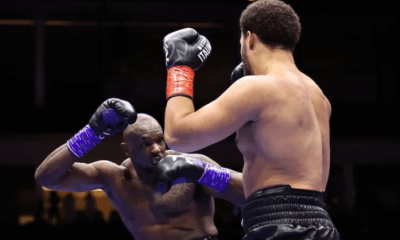
 Featured Articles7 days ago
Featured Articles7 days agoMoses Itauma Continues his Rapid Rise; Steamrolls Dillian Whyte in Riyadh
-
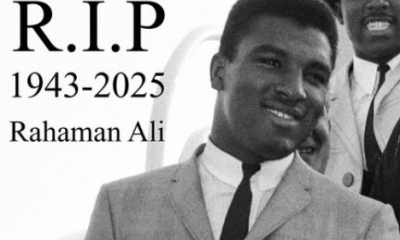
 Featured Articles3 weeks ago
Featured Articles3 weeks agoRahaman Ali (1943-2025)
-

 Featured Articles3 weeks ago
Featured Articles3 weeks agoTop Rank Boxing is in Limbo, but that Hasn’t Benched Robert Garcia’s Up-and-Comers






